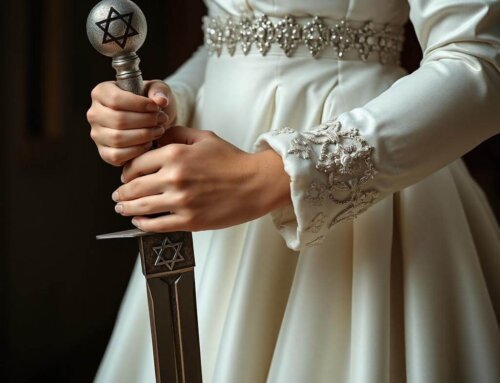 In the beginning of Sefer Shmot, we are witness to the steep decline of the Jewish people into slavery.
In the beginning of Sefer Shmot, we are witness to the steep decline of the Jewish people into slavery.
One of the lowest points, the darkest and most hopeless moments in this story, is the point when Pharoah decrees that all male, Jewish babies be thrown into the river and killed.
After such a tragic decree, we would expect the next verse to describe the mourning, the heartbreaking wails of the parents watching their children be thrown to death. However, the next verse cryptically explains that, ‘a man from the house of Levi went, and took a daughter of Levi [as his wife], and she became pregnant and gave birth to a son and saw he was good, and hid him for three months’ (Shmot 2/1).
Rashi explains the backstory to this surprising verse. Amram, the leader of the Jewish people, the Gadol HaDor (his words, not mine), heard Pharaoh’s decree and was filled with despair. He cried out, ‘We are working for naught!’ Overcome by the futility of the situation, and the impossibility of the survival of the Jewish people, he promptly divorced his wife. The rest of the Jewish men followed suit, and so it was that the Jewish nation was broken – homes and relationships torn apart, the future, and present, hopeless, bleak and with no purpose.
Until Miriam, Amram’s young daughter, stood up and challenged her father.
She faced the Gadol Hador and said, ‘Your decree is worse than Pharoah’s! He commanded to kill all the males – but you are erasing male and female!’
Amram listened to her words, and, according to the Midrash, went and took back his wife in a beautiful ceremony, including a carriage ride, singing and dancing, and angels declaring ‘the mother of sons is happy’. The rest of the Jewish men, again, followed suit.
The man and woman from the house of Levi were Amram and Yocheved, remarrying, and conceiving Moshe Rabbenu, the leader of the redemption.
It’s a beautiful story, but how did Miriam have the knowledge that there was something worth fighting for? Where did she come by the conviction, and the courage, to challenge the leader of the Jewish people and insist that all hope was not lost? That there was reason to believe in the continuity of the Jewish people?
Miriam is deeply connected to knowledge of the female body and cycle. As a midwife, she had a deep, intimate understanding of the intertwined relationship of life and death.
Every women carries within her body, either physically or energetically, a monthly cycle of life and death. Every month, at the moment when the menstrual bleeding begins, there is a symbolic death. One’s period symbolizes that death – the end, the life that was not, the possibilities that didn’t come into fruition, a level of hopelessness. Yet, at that same time, within her body, new follicles begin to ripen. There is hope, and there is movement. The cycle starts anew and brings with it new possibilities.
A woman’s cycle mimics that of exile and redemption. The moment of death is also the moment of hope. Inherently, women know that they happen together – that at the moment we reach the bottom, that is the same moment where the shift upwards begins.
And having that embodied understanding gave Miriam, and the rest of the Jewish women, the ability to hold space and hope and actively bring the future, even when the men despaired and were overcome by the hardships of slavery.
What did that look like practically?
It looked like Miriam preparing the tambourine to celebrate the redemption before they had even left Mitzrayim. It looked like the women doing everything in their power to ensure the physical protection and growth of the nation, and creating an intimate, emotional and sexual relationship with their partners.
The Gemara and Midrash have several glorious sources which provide details and practical ideas of how they (and we) achieved that sense of intimacy (hint: in includes sex, and it’s not what you learned in any class before!). To learn these sources, check out the list below, or better yet- click here for the recording of the full class!
Wishing us all a healthy, happy Pesach, and to merit redemption through the path paved for us by the righteous women in Egypt, and throughout Jewish history!
Sources:
Shmot 38/8, Rashi
Yalkut Shimoni שנד
Midrash Tanchuma, Pekudei 9
Yonina Rubinstein is a sexuality educator, certified intimacy coach and author of the recently published ‘Sexuality After Childbirth’. She made aliyah as a child and resides with her family in Efrat.








Leave A Comment